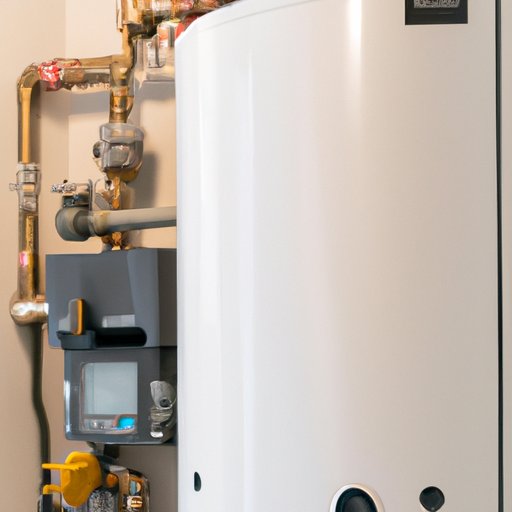Introduction
A water heater is an essential appliance in most homes, providing hot water for showers, laundry, dishes, and other household needs. But how does a water heater work? Understanding this can help you make an informed decision when selecting the best water heater for your home, as well as diagnose and troubleshoot any potential issues that arise.
Exploring the Basics of How a Water Heater Works
Water heaters use a variety of components and mechanics to generate hot water. The basic process involves heating cold water and then storing it until it is needed. Here’s a look at how the different parts of a water heater work together.

How to Choose the Right Water Heater for Your Home
When choosing a water heater, there are several factors to consider. These include the size of your home, the number of people in your household, the type of fuel source available, and the amount of hot water you need on a daily basis. Different types of water heaters are available, including traditional tank water heaters, tankless water heaters, and heat pump water heaters.

The Components and Mechanics Behind a Water Heater
To understand how a water heater works, it’s important to first understand the different parts of a water heater. These components include the tank, the burner or element, the thermostat, the anode rod, the dip tube, the pressure relief valve, and the drain valve. Each of these components plays an important role in the functioning of a water heater.
The tank is where the cold water is stored and heated. The burner or element heats the water inside the tank. The thermostat regulates the temperature of the water. The anode rod helps prevent corrosion in the tank. The dip tube directs cold water to the bottom of the tank, while the pressure relief valve helps release excess pressure from the tank. Finally, the drain valve allows for draining and flushing of the tank.
Once the water is heated, it is stored in the tank until it is needed. When the hot water tap is opened, the hot water is pushed out of the tank and cold water enters the tank to replace it. This process continues until the tap is closed.

Understanding the Different Types of Water Heaters
Traditional tank water heaters are the most common type of water heater. These consist of an insulated tank that stores hot water until it is needed. Tankless water heaters, sometimes called “on-demand” water heaters, heat water as it is needed and do not require a storage tank. Heat pump water heaters use a heat pump to transfer heat from the surrounding air into the water, resulting in greater energy efficiency.
The Pros and Cons of Tankless Water Heaters
Tankless water heaters have several advantages over traditional tank water heaters. They are more energy efficient because they only heat water when it is needed. This can result in significant energy savings over time. Additionally, tankless water heaters take up less space and have a longer lifespan than traditional tank water heaters. However, the initial cost of installation can be higher for tankless water heaters.
Maintaining and Troubleshooting Your Water Heater
Proper maintenance is key to keeping your water heater running efficiently and lasting for many years. Regularly inspect the tank for signs of corrosion, check the temperature and pressure relief valve, and flush the tank once a year to remove sediment buildup. Common problems with water heaters include a leaking tank, not enough hot water, and strange odors or noises coming from the tank.
If you experience any of these issues, it’s important to address them quickly. Many of these problems can be easily resolved with a few simple steps, such as replacing the anode rod or adjusting the temperature setting. If the problem persists, however, you may need to call a professional plumber for assistance.

How to Save Money on Your Hot Water Bills with a Water Heater Upgrade
Upgrading your water heater can provide significant cost savings by reducing your monthly energy bills. Upgrading to an energy-efficient model can result in lower operating costs, as well as improved performance and increased hot water capacity. Additionally, depending on the type of water heater you choose, you may be eligible for government rebates or energy credits.
Before upgrading your water heater, it’s important to research the different models available and determine which one is best suited to your needs. Consider factors such as size, fuel type, and energy efficiency when making your decision.
Conclusion
Water heaters are an essential part of most households. Understanding how a water heater works can help you make an informed decision when selecting the best one for your home. There are several types of water heaters available, including traditional tank water heaters, tankless water heaters, and heat pump water heaters. Each type has its own advantages and disadvantages. Proper maintenance is key to ensuring your water heater runs efficiently and lasts for many years. Additionally, upgrading to an energy-efficient model can help reduce your monthly energy bills.
(Note: Is this article not meeting your expectations? Do you have knowledge or insights to share? Unlock new opportunities and expand your reach by joining our authors team. Click Registration to join us and share your expertise with our readers.)
